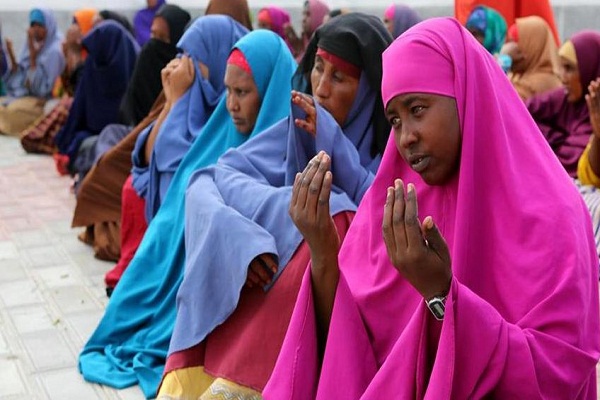Africa is the third-largest continent on the planet after Australia or Europe and America, and the second-most populated after Australia or Europe. With a location of 30,224,050 km², Africa covers 20.3% of the total land location of the Planet. With ± 1,097,100 residents in 54 nations, this continent is the home of one-seventh of the world’s populace. Such as Australia or Europe, Africa is a location that has a large Muslim populace. In subscription to the Company of Islamic Collaboration which is composed of 57 nations, there are 27 African nations.
Of the total populace of Africa, about 581 million people are Muslims. However, there are some nations where Islam is a spiritual minority in the nation. Among them is Ethiopia. Muslim minorities in Africa occur in 2 ways: Muslim lands that have been dominated by colonial powers leading to a decrease in the Muslim populace and Muslim movement to locations with reduced Muslim populace thickness.
Muslims in Ethiopia
This minority process triggered the dynamics of Muslims in Africa. After the self-reliance of African nations, Muslims often really felt so backward that they could not take on grades of Christian institutions. Additionally, the federal government of minority nations also intimidates Muslims a great deal, production it challenging for Muslims to develop.
Ethiopia Summary
Muslims in Ethiopia
Name: Autonomous Government Republic of Ethiopia
Official language: Amharic
The funding is from Addis Ababa.
The approximated populace in 2015 inning accordance with Main Analytical Company ± 90,076,012 people
Ethiopia is split right into 14 provinces.
There are 80 ethnic backgrounds and the biggest are Oromo (34.4%) and Amhara (27%).
The area of Ethiopia is among the earliest worlds on the planet. The federal government of Ethiopia has initially established about 980 BC. The nation was never colonized throughout the struggle for Africa and stayed independent until 1936 when Italian soldiers took control of the nation. British and Ethiopian soldiers beat the Italian military and Ethiopia restored its sovereignty after signing the Anglo-Ethiopian treaty in December 1944.
Geographical problems Ethiopia itself is an arid ordinary in the bogs and has a warm environment in the highlands. Ethiopia’s severe geographical problems have separated many people and often have preserved their old way of language and life. There are 80 ethnic teams in Ethiopia, the 3 main ethnic teams in Ethiopia, specifically the Oromo, Amhara, and Tigray ethnic teams. These 3 ethnic teams represent the biggest portion of the populace of Ethiopia.
Most Ethiopians live in the backwoods and earn a living as farmers or livestock herders. Because of financial problems, a couple of people can afford to buy cows. So to rake the areas, they use their power with the help of children.
The development and process of Islamic minorities in Ethiopia
Islam concerned Ethiopia or Habasyah (Abyssinia) in 615 AD to be precise in the city of Axum, they were Muslims that emigrated led by the prophet’s relative, Ja’far container Abi Talib. This Muslim evacuee from the Capital was approved by the king of Negus/Najasy. The king treated Muslims well, protected them, and eventually, he accepted Islam.
Throughout the Umayyad duration, Muslims inhabited the Dahlak archipelago and the port of Massawa. From this base, Islam was after that proliferated to the interior of the continent. By the 12th century, the whole coast of Eritrea had been transformed into Islam. In the year 283 AH, an Islamic specify was established in East Shoa (present-day Addis-Ababa area) under the Makhzumi empire.
In the sixteenth century, Islam was restored in Ethiopia, under the management of Ahmad ibn Ibrahim Al-Ghazi (1506-1543) that succeeded in uniting all the Muslim nations of Ethiopia. In 1531, the Muslims inhabited Dawaro and Shoa, and in 1533, Amhara and Lasta, as well as the Christian specify of Abyssinia, were eliminated. Ever since Ethiopia is supported by ending up being 2 nations, a Muslim nation in the south with the funding Harrar and a smaller-sized Christian nation in the north.
In the 19th century, the development of colonial ambitions in Africa led to the rise of the Christian specify of Ethiopia, using the booty and starting expansionist plans versus the Muslim country in the spirit of the crusade. In 1831 Theodros inhabited the throne of Ethiopia with a program of the reunification of the Christians, dominated Jerusalem, the Capital, and Medina, eliminated Islam, and produced tranquility in Ethiopia. The Muslims were brutally massacred in Wollo in 1855, and the Egyptians were beaten in Eritrea.
The last disaster versus the Islamic Specify of Ethiopia occurred when its funding Harrar was inhabited in 1887. By Christians. The Islamic Specify was eliminated, the great mosque in the funding was exchanged for a church, and it remains this way today. Virtually the Muslim populace is enslaved, by various This occasion triggered an extreme decrease in the Muslim populace in Ethiopia.
Muslim Dynamics in Ethiopia
Since the 19th century under the Ethiopian (Christian) guidelines, Muslims have been omitted from several public workplaces, although the 1931 constitution established equal rights and enabled Muslims to own land, inhabit several federal government settings, and formally acknowledge Muslim spiritual celebrations. However, plans that harm Muslims are greater than pro-Islamic plans.
Demographics in Ethiopia from Populace Demographics Compensation information in 2007, states that of the total populace of Ethiopia, the variety of Muslims is 33.9% (25 million), Christians 62.7% (46 million), and traditional religious beliefs 2.6% (1.9 million). million) , & another 0.63%. Muslims are the bulk in Somali, Event, Argobba, Oromia locations, and Harari.
Most Ethiopian Muslims come from the Shafi’i institution. As in surrounding nations Sudan and Somalia, Erekat have an important role in the development of Islam in Ethiopia. There have to do with 82 mosques, 3 of which were integrated in the 10th century, and there are also 102 divine places. Additionally, the development of the Muslim populace is forecasted to increase every year, it can be seen in the Pew Research Facility table listed below:
It can be seen from the forecast table that Muslims will increase by 5% in 2050, among the factors that cause this to occur is the average development of the Muslim populace which gets to 2.5% annually. Most likely, this will also occur in Ethiopia.
However, along with populace development that proceeds to increase, Ethiopian Muslims are also experiencing various problems such as minorities in various other nations, these problems consist of: Many spiritual leaders are detained by the federal government, Limitations on the use of Arabic, and Islamic institutions are closely kept track of, Mosques are thought of being unlawful. resource of the development of radicalism, spiritual leaders are persecuted, and permits for the building of Muslim structures are complicated.
Besides the oppression performed on Muslims, the federal government increases the issue of radicalism which is progressively catching Ethiopian Muslims. The Ethiopian federal government claims that “radicalization” is expanding in Ethiopia. Mosques are seen as centers of requiring the jihad movement. So the Federal government tightened up the guidance of Ethiopian mosques. The government ministry implicated protesters that opposed their plans at these mosques as being “extremists,” that participated in physical violence and worked together with al-Qaeda to incite jihad. The development of the issue of radicalism in Ethiopia is an effort by the federal government to attempt to control the influence of mosques to gain wider political control in the nation.
Final thought
The area of Ethiopia is among the earliest worlds on the planet. The federal government of Ethiopia has initially established about 980 BC. Geographical problems Ethiopia itself is an arid ordinary in the bogs and has a warm environment in the highlands. Ethiopia’s severe geographical problems have separated many people and often have preserved their old way of language and life.
Islam concerned Ethiopia or Habasyah (Abyssinia) in 615 AD to be precise in the city of Axum, they were Muslims that emigrated led by the prophet’s relative, Ja’far container Abi Talib. In the 16th century, Muslims had controlled the whole landmass of Ethiopia, but in the 19th century Christians increased and took control of the Ethiopian location, this also triggered a Muslim minority in Ethiopia.
In the practice of everyday life today, the federal government conflicts a great deal in the worship of Muslims. The federal government has issued many plans that hurt Muslims. To further corner the Muslim community, the federal government exhaled the issue of radicalism.

